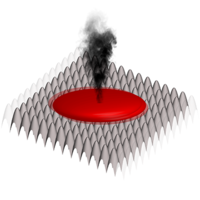Abstract
In this work, we analyze the dynamical properties of periodically driven band models. Focusing on the case of Bose-Einstein condensates, and using a mean-field approach to treat interparticle collisions, we identify the origin of dynamical instabilities arising from the interplay between the external drive and interactions. We present a widely applicable generic numerical method to extract instability rates and link parametric instabilities to uncontrolled energy absorption at short times. Based on the existence of parametric resonances, we then develop an analytical approach within Bogoliubov theory, which quantitatively captures the instability rates of the system and provides an intuitive picture of the relevant physical processes, including an understanding of how transverse modes affect the formation of parametric instabilities. Importantly, our calculations demonstrate an agreement between the instability rates determined from numerical simulations and those predicted by theory. To determine the validity regime of the mean-field analysis, we compare the latter to the weakly coupled conserving approximation. The tools developed and the results obtained in this work are directly relevant to present-day ultracold-atom experiments based on shaken optical lattices and are expected to provide an insightful guidance in the quest for Floquet engineering.
14 More- Received 20 October 2016
DOI:https://doi.org/10.1103/PhysRevX.7.021015
Published by the American Physical Society under the terms of the Creative Commons Attribution 4.0 International license. Further distribution of this work must maintain attribution to the author(s) and the published article’s title, journal citation, and DOI.
Published by the American Physical Society
Physics Subject Headings (PhySH)
Popular Summary
At very low temperatures, quantum matter can show radically different, and often counterintuitive, behavior compared to traditional liquids, solids, and gases. Such quantum phases of matter (e.g., superfluids and superconductors) are used in practical applications such as levitating trains and medical imaging. In the field of quantum simulation, researchers are attempting to engineer phases of matter that are even more exotic. One appealing approach is to start with a standard quantum fluid and “drive it” by shaking it, rotating it, or subjecting it to an external field. However, this method faces a serious difficulty: The phase is unstable. We have developed mathematical tools that reveal the origin and signatures of these instabilities that are directly relevant to current experiments.
Our rigorous theoretical methods offer simple analytical expressions that apply to a wide variety of driven systems, such as shaken atomic gases in optical lattices as well as irradiated solids. We identify the relevant instabilities that appear over very short times—in an explosive manner—due to the interplay between the external drive and interparticle collisions. These instabilities are caused by a buildup of collective excitations of the quantum gas upon driving. We present a simple but powerful method to calculate the instability rates associated with these excitations and identify clear manifestations (e.g., momentum distributions) that can be observed in experiments.
Understanding how quantum systems respond to an external drive, and the mechanisms through which such systems destabilize, will ultimately allow for the development of robust engineered quantum setups that are immune to instabilities and heating processes. This is not only crucial for our understanding of quantum matter but also for technological applications such as quantum computing.



